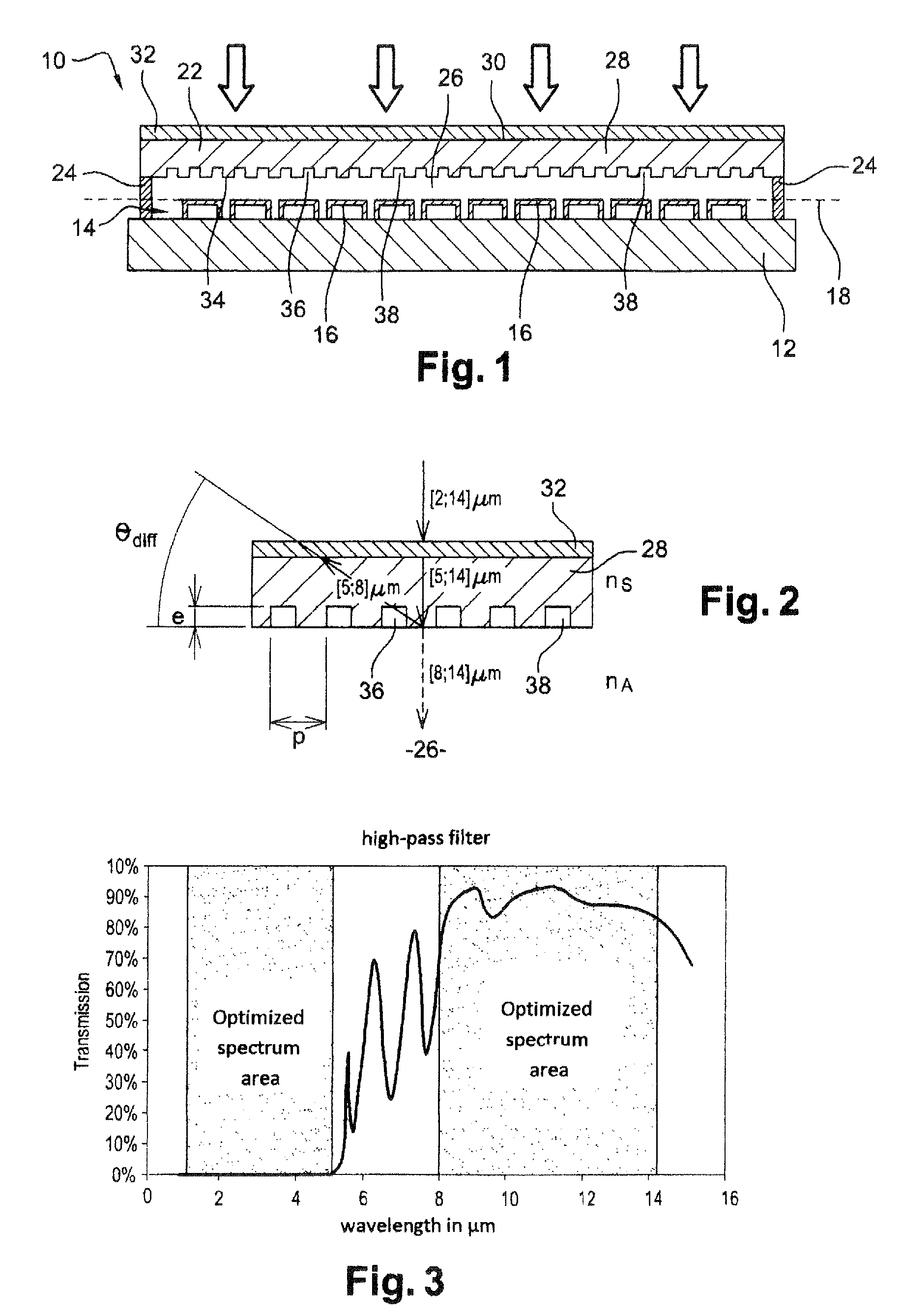Infrared detector comprising a package integrating at least one diffraction grating
a technology of infrared detector and diffraction grating, which is applied in the field of microbolometric detection, can solve the problems of high cost of optical filters, harsh specifications become an economic issue, and the image formed by detectors are easily disturbed by imperfections, etc., and achieves low defectivity and low cost
- Summary
- Abstract
- Description
- Claims
- Application Information
AI Technical Summary
Benefits of technology
Problems solved by technology
Method used
Image
Examples
Embodiment Construction
[0053]In FIG. 1, an infrared bolometric detector 10 comprises a base 12 comprising at its upper surface a read circuit, a sensitive retina 14, formed of a plurality of bolometric membranes 16 suspended above the read circuit by means of mechanical support, and thermal insulation arms. Membranes 16 each form a point of the detector sensitive to infrared radiation, especially of wavelength ranging between 8 μm and 14 μm. Retina 14 is placed in focal plane 18 of an optical system (not shown). The read circuit is not differentiated from base 12 in FIG. 1, where it forms this base per se, but may also be placed in the form of an electronic chip assembled on the internal surface of a bottom of a conventional package, the assembly forming base 12 according to the present invention. The read circuit further comprises addressing and bias circuits (also not shown) necessary to the forming of the useful signals by means of membranes 16.
[0054]Detector 10 further comprises a first wall 22, locat...
PUM
 Login to View More
Login to View More Abstract
Description
Claims
Application Information
 Login to View More
Login to View More - R&D
- Intellectual Property
- Life Sciences
- Materials
- Tech Scout
- Unparalleled Data Quality
- Higher Quality Content
- 60% Fewer Hallucinations
Browse by: Latest US Patents, China's latest patents, Technical Efficacy Thesaurus, Application Domain, Technology Topic, Popular Technical Reports.
© 2025 PatSnap. All rights reserved.Legal|Privacy policy|Modern Slavery Act Transparency Statement|Sitemap|About US| Contact US: help@patsnap.com



